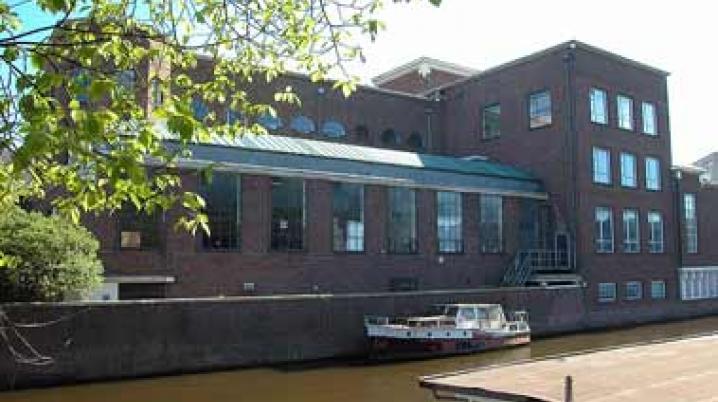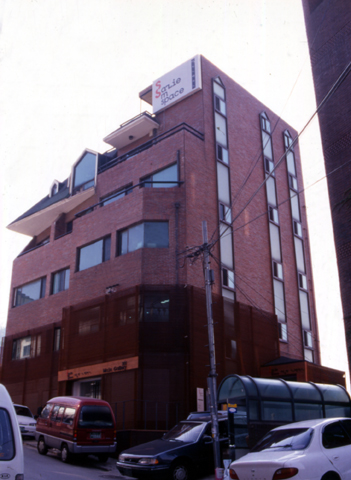
Investigating Korean & Dutch independent art scene
Amsterdam, April 2011: Q & A with Hyunjin Shin (Seoul, South Korea), curator in residence at Smart Project Space in Amsterdam.
Q: How do you use your time in residence in Amsterdam? Is it for research, developing an exhibition, extending networks, a break from every day routine?
A: I came to Amsterdam to continue my research about alternative art scenes in Europe. For the last 12 years I have worked at alternative spaces both in Korea (SSamziespace) and the US (Asian American Arts Center). These working experiences allowed me to compare the developments and more importantly the fall of alternative art scenes in two countries. While both art scenes share the relationship with the development of a global economy epitomized with Neoliberal ideology, they also face institutional changes i.e. roles of art professionals and organizations. Both organizations that I worked for decided to close down. After I organized a lecture programs about the 10-year-development of the Korean alternative art scene in 2009, I decided to study socio, political, and art historical aspects of alternative art scenes of Korea and Europe, which already experienced similar conditions.
On a personal level, it is a meaningful step since it allows me to draw a kind of conclusion after my 12 year career working at alternative art spaces. That was the reason to do the residency here. I asked Smart Project Space and the organization kindly allowed me to come and introduced me to the Mondriaan Foundation for arranging meetings with art professionals in the Netherlands. So, most of the time this month I attend meetings with curators, art administrators, policy makers, art magazine reporters not only in Amsterdam but also in some other countries in Europe.
Q: What where your expectations before you started the residency?
A: It is a bit over my head, and that is another reason why I am here. To figure things out. A few thoughts that came to mind before I came here is that I hoped it would provide me time and perspective to process and wrap-up the previous 12 years of my career as a curator, then to redevelop and set a new direction for myself. The interviews provide a foundation to write a dissertation and hopefully a book plus conference. And Mondriaan and Smart's help making the meetings happen is the most wonderful thing.
Q: Can you shortly describe the rise of alternative spaces in South Korea and the late developments in the air-field?
A: In the late 1990s artists in Korea and artists who studied abroad started to open up alternative art spaces. For the last 10 years, the alternative spaces were considered to be a critical component in the development of contemporary Korean art. They brought about many changes. Not only in the aesthetic choices in art practices with an emphasis on conceptual art, installation, and pop art, but also structural changes such as an emerging artists support program, development of curatorship, international networks and residency programs. An exploding growth of the contemporary art market has been a major element of the changes to take place. Often, alternative spaces are identified as the core factor of such changes. However, out of all the achievements they made, most favorable were their promotional activities for emerging artists. Sarubia ‘s site specificity, POOL ‘s activism, Insa Art Centers Critique Program seemed to be less important. Thus the crisis of alternative art spaces can be called as that of alternativeness. This conclusion can be backed up by the changed funding policy of the government, which has been the only funding source to these early alternative spaces.
Harsh may it sound, but a criticism grew when commercial galleries began seeing the potential of emerging artists in the market. Suddenly not only alternative spaces but also commercial galleries were exhibiting works of the experimental artists alternative spaces once presented, internationally promoting them. Arario began offering contracted artists generous stipends, and by 2005, after a student work fetched US$100,000 at Sotheby's HK, the boundary between alternative space and commercial gallery had been virtually obliterated.
Though they caused many significant changes in Korean art history, alternative art spaces had a short life span. By 2008/2009 the alternative art spaces closed down or moved to fringe areas in the city. Through research in the past, I have learned that there are multiple perspectives on the causes of such a phenomenon. Dongjin Suh, a culture critic states that contemporary art and culture is deeply connected to the late capitalist environment and neo-liberal economic structures. The success of Korean alternative art spaces is indebted to the fact that these spaces provided a perspective through which the hegemony of a neo-liberal economy was realized in the arts. Similar assessments on the art institutions are made in Europe. Nina Montmann at Royal University College of Fine Arts, Stockholm has written an article, ‘The Enterprise of Art Institutions in Late Capitalism.’ She stated cases of how art institutions act as if they are agents from a business enterprise as they become part of the globalization process. “… The classic bourgeois institutional model, however, has long since been replaced by a corporative institutional logic, flexibilized working conditions, a program with event character and a populist concept of the public sphere.” It is interesting that they are making arguments on institutional critique rather than aesthetic grounds.
Now in Korea, after the conservative party has been elected both presidential and mayoral together, combined with dwindling influence from alternative spaces, Korea's art scene and AIR have been undergoing a dramatic transition. For example, the mayor of the city of Seoul devised a more than ambitious plan under the term, 'Culture-nomics' coined by the administration. They are planning to build 22 AIR-art organizations throughout the city hoping this will be helpful for promoting (young) contemporary Korean artists and will help the regeneration of the boroughs. National and local funding toward the arts have been steered to building huge art organizations that are directly run by government officials. Not only the number of contemporary art organizations in one city is ridiculous but also the staffing was problematic as such organization was mostly filled with administrative officials instead of art professionals. The situation is now changing slowly, however, it is too early to make conclusions how that will develop further. Time will tell.

Q: How did you collaborate with the guest artists in the art space you worked before?
A: SSamziespace for instance was an AIR that provided connections between foreign art professionals and Koreans. It was our goal to provide administrative support and some financial assistance through matching people. Since its mother company was relatively small, there was merely a focus on administrative support for artists who want to carry out their own projects; by connecting individuals and organizations foreign and domestic all together and providing interns and assistants and research as much as we can. Ideally it was creating artists' heaven, well at least in concept. Fortunately, many agreed.
Q: What should and shouldn't bring an artist going in residence in Korea ?
A: Hmm, I cannot think of.... But it is a rule of thumb that it is wise the artists have respect for Korean culture which is Confucianism in its orientation. And try to be flexible and outgoing.
www.insaartspace.or.kr/frontEN.asp
www.ararioseoul.com
www.smartprojectspace.net
More about Hyunjin Shin’s research at http://blog.naver.com/artfirm

